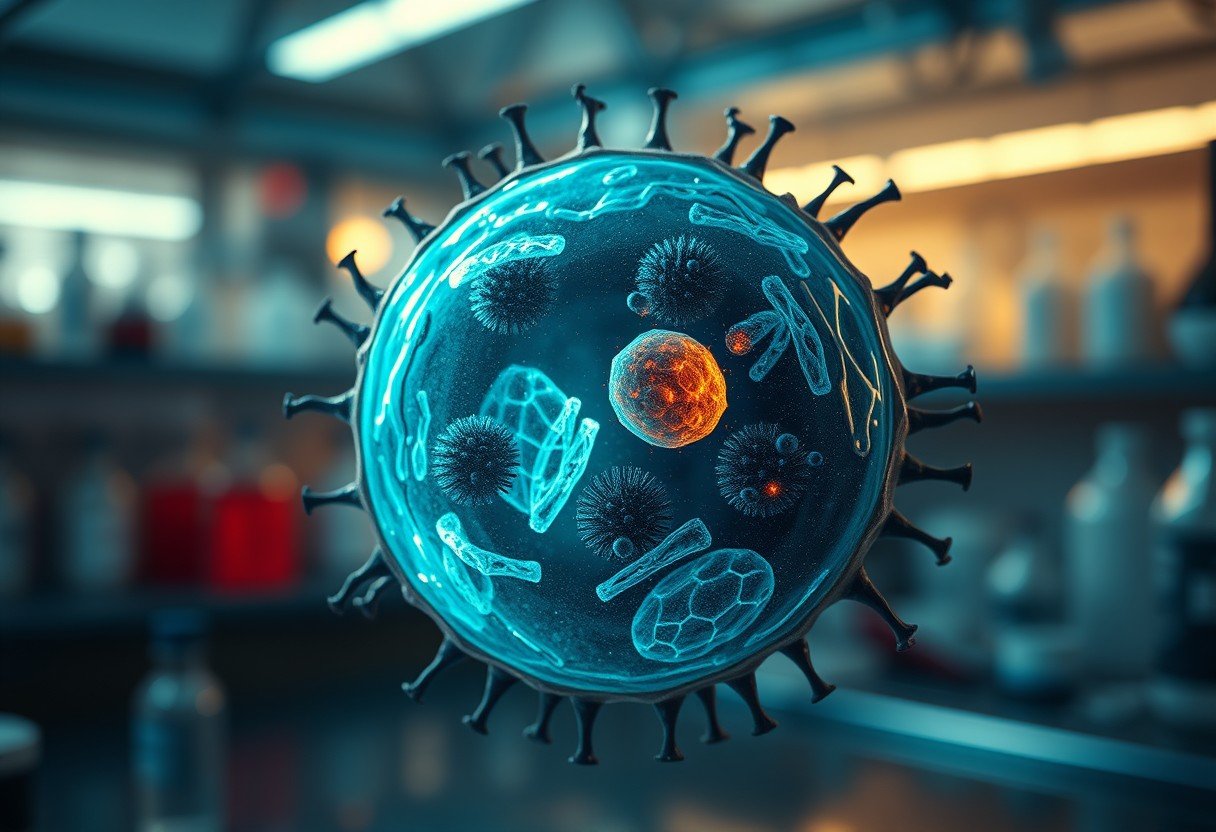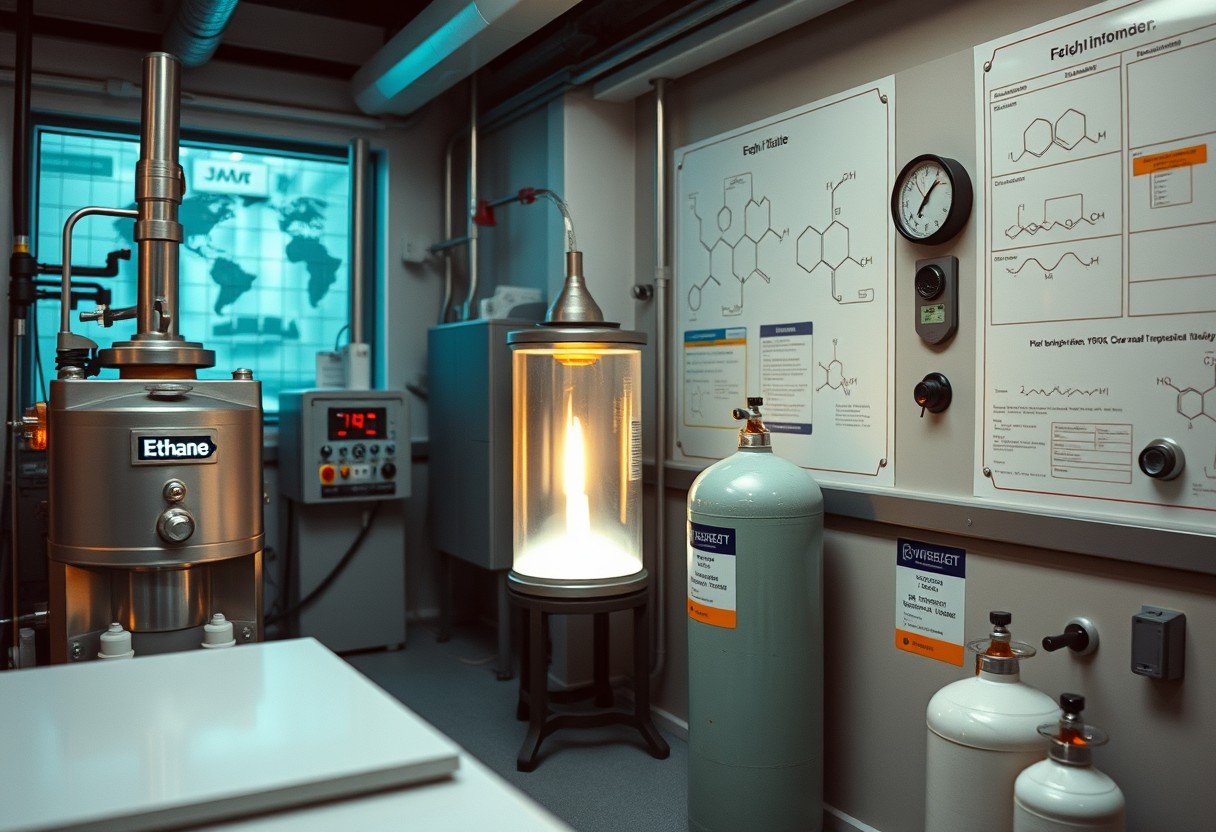When you eat food, your body breaks it down into a simple sugar called glucose. Through a process called glycolysis, this glucose is converted into pyruvic acid. In organisms that breathe oxygen, this pyruvic acid molecule plays a vital role. It moves into the cell’s powerhouse, the mitochondria, where it is transformed to kickstart a series of reactions that generate a large amount of energy, allowing your cells to function, grow, and repair themselves.
From Glucose to Pyruvic Acid: The Glycolysis Stage
The journey of energy production begins in the cytoplasm of your cells, not the mitochondria. This initial stage is known as glycolysis, which literally means “splitting sugar.” It’s a fundamental metabolic pathway that doesn’t require oxygen.
During glycolysis, a single molecule of glucose, which has six carbons, is broken down through a series of ten enzymatic steps. The end result is two molecules of pyruvic acid, each containing three carbons.
This process isn’t just about breaking down glucose; it’s also about capturing a small amount of energy. While four ATP molecules are produced, the process uses two ATP to get started, resulting in a net gain of two ATP. Additionally, two molecules of NADH, an important electron carrier, are generated. These molecules will be crucial for producing much more energy later on.
The Critical Transition into the Mitochondria
Once pyruvic acid is formed in the cytoplasm, it stands at a metabolic crossroads. For an organism using aerobic respiration, its destination is the mitochondria, the specialized organelle responsible for large-scale energy production.
This transition is a critical step that links the initial breakdown of glucose with the more powerful energy-extracting cycles that follow. Before pyruvic acid can enter the main event, the citric acid cycle, it must first undergo a transformation.
Inside the mitochondria, an enzyme complex acts on pyruvic acid in a process called pyruvate oxidation. During this step, one carbon atom is removed from the three-carbon pyruvic acid and released as carbon dioxide, which is a waste product you exhale.
The remaining two-carbon compound is then attached to a coenzyme called Coenzyme A, forming a new molecule called acetyl-CoA. This conversion is absolutely essential because acetyl-CoA is the molecule that can actually enter the citric acid cycle. This step also produces another molecule of the energy carrier NADH.
Acetyl-CoA and the Citric Acid Cycle
The creation of acetyl-CoA sets the stage for the citric acid cycle, also famously known as the Krebs cycle. This cycle is a central hub of cellular metabolism, acting like a furnace that further breaks down the remnants of the glucose molecule to release its stored energy.
Acetyl-CoA enters the cycle by combining with a four-carbon molecule called oxaloacetate to form a six-carbon molecule called citrate. This is the first step that gives the cycle its name. From there, the citrate molecule undergoes a series of eight enzymatic reactions.
With each turn of the cycle, the molecule is progressively oxidized, releasing the stored energy. This energy isn’t directly converted into a large amount of ATP within the cycle itself. Instead, it’s primarily captured in the form of high-energy electron carriers. The table below summarizes the output from a single turn of the citric acid cycle, which processes one molecule of acetyl-CoA.
| Molecule Produced | Quantity per Turn |
|---|---|
| NADH | 3 |
| FADH2 | 1 |
| ATP (or GTP) | 1 |
| Carbon Dioxide (CO2) | 2 |
Since one glucose molecule produces two pyruvic acid molecules (and thus two acetyl-CoA molecules), the cycle must turn twice to fully process the energy from the original glucose molecule.
Cashing in the Energy: Electron Transport Chain
The citric acid cycle generates a wealth of energy-rich molecules, but most of the energy is still locked away in the electrons carried by NADH and FADH2. The final stage of aerobic respiration, the electron transport chain, is where this energy is converted into a large number of ATP molecules. This process, known as oxidative phosphorylation, takes place on the inner membrane of the mitochondria.
The NADH and FADH2 molecules travel to this inner membrane and donate their high-energy electrons to a series of protein complexes. As the electrons are passed down the chain, like a bucket brigade, they lose energy.
This released energy is used for a crucial task: pumping protons (H+ ions) from the inner mitochondrial compartment to the space between the inner and outer membranes. This action creates a high concentration of protons in the intermembrane space, forming an electrochemical gradient. This gradient represents a form of stored energy, much like water held behind a dam. The key steps are:
- High-energy electrons are delivered by NADH and FADH2.
- Electrons are passed along a series of protein complexes.
- Energy from the electrons is used to pump protons across the inner mitochondrial membrane.
- Oxygen acts as the final electron acceptor at the end of the chain, combining with electrons and protons to form water.
The stored energy in the proton gradient is then used to power an enzyme called ATP synthase. Protons flow back into the inner compartment through this enzyme, and the force of this flow drives the synthesis of ATP from ADP and phosphate. This process is responsible for producing the vast majority of ATP during aerobic respiration.
Why is Aerobic Respiration so Efficient?
The step-by-step breakdown of pyruvic acid through the citric acid cycle and the electron transport chain is what makes aerobic respiration incredibly efficient at extracting energy from glucose. Compared to anaerobic processes, which occur without oxygen, the energy yield is significantly higher.
An anaerobic process like glycolysis alone only nets about 2 ATP molecules per glucose. This is enough to sustain some simple organisms or to provide a quick burst of energy for muscle cells, but it’s not sustainable for complex, multicellular life.
In contrast, aerobic respiration can generate a much larger amount of ATP from a single molecule of glucose. While the exact number can vary depending on cellular conditions, the total yield is substantial.
- Glycolysis: 2 net ATP
- Citric Acid Cycle: 2 ATP
- Electron Transport Chain: Approximately 28-34 ATP
This massive difference in ATP production highlights the evolutionary advantage of using oxygen to completely oxidize glucose. It allows organisms to support more complex structures, functions, and higher levels of activity.
What Happens When Oxygen is Not Available?
If an organism cannot perform aerobic respiration because oxygen is scarce or absent, pyruvic acid cannot enter the mitochondria and is instead redirected into anaerobic pathways. This process is broadly known as fermentation.
The primary purpose of fermentation is not to produce more ATP, but to regenerate the NAD+ molecules that were used up during glycolysis. This allows glycolysis to continue producing its small but vital supply of 2 ATP, keeping the cell alive in the absence of oxygen.
In animals, including human muscle cells during intense exercise, pyruvic acid is converted into lactic acid. This is what can cause the burning sensation in your muscles. In other organisms, like yeast, pyruvic acid is converted into ethanol and carbon dioxide in a process called alcoholic fermentation. This is the process used to make bread, beer, and wine. These alternative fates ensure that energy production can continue, albeit much less efficiently, when oxygen is not available.
Frequently Asked Questions about Pyruvic Acid
What is the primary role of pyruvic acid in aerobic respiration?
Pyruvic acid acts as the crucial link between glycolysis, which breaks down glucose in the cytoplasm, and the citric acid cycle, which occurs inside the mitochondria. It is converted into acetyl-CoA to fuel the next stage of energy production.
Where does the conversion of pyruvic acid to acetyl-CoA take place?
This conversion process, known as pyruvate oxidation, happens inside the mitochondria. Specifically, it occurs in the mitochondrial matrix after pyruvic acid is transported from the cell’s cytoplasm.
Why is oxygen necessary for the complete breakdown of pyruvic acid?
Oxygen serves as the final electron acceptor in the electron transport chain. Its presence allows the chain to continue functioning, which enables the complete oxidation of pyruvic acid and maximizes ATP production.
What happens to the carbon atoms from pyruvic acid?
During the conversion to acetyl-CoA and within the citric acid cycle, all three carbon atoms from the original pyruvic acid molecule are released as carbon dioxide (CO2), which is a waste product of respiration.
Can pyruvic acid be used for things other than energy production?
Yes, pyruvic acid is a versatile metabolite. It can be converted into amino acids like alanine, used for the synthesis of fatty acids, or even be used to generate new glucose through a process called gluconeogenesis.









Leave a Comment